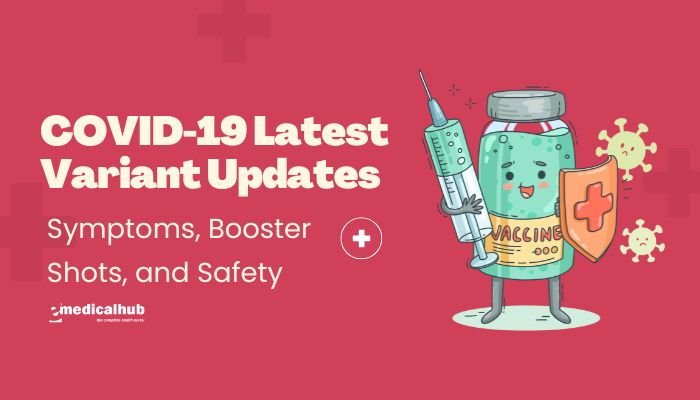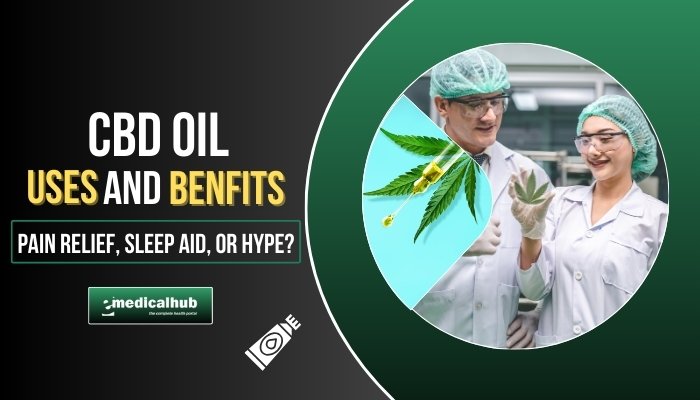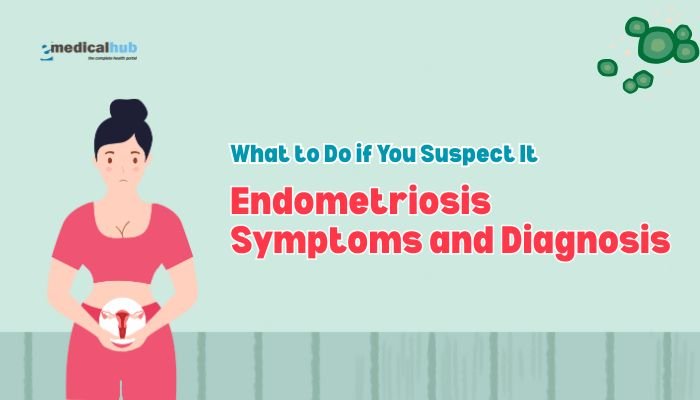Introduction
Since the start of the COVID-19 pandemic, the SARS-CoV-2 virus has undergone multiple mutations, leading to new variants and subvariants. Each iteration can differ in contagiousness, immune evasion, or severity, impacting public health guidance and vaccination strategies.
As health authorities continue to monitor emerging strains, it is crucial for people to stay informed about the latest variant developments, common symptoms, booster recommendations, and safety measures.
While the broader global impact of the pandemic has shifted due to widespread vaccination and some natural immunity, localized surges and new variants can still disrupt communities, particularly among vulnerable populations.
This article provides an overview of recent COVID-19 variant updates—what they are, what symptoms are commonly reported, how booster shots are evolving to address these mutations, and what steps you can take to remain protected.
By revisiting practical safety guidelines and exploring the continuing role of vaccination, we can maintain vigilance while returning to more normal routines.
Note: As of 2023, the landscape of SARS-CoV-2 variants is subject to rapid change. Always refer to local health authorities (e.g., CDC, WHO) for the most updated information in your region.
Overview of COVID-19 Variants
Virus Evolution Basics
- Mutations: Like many RNA viruses, SARS-CoV-2 accumulates genetic changes over time. Mutations can appear randomly, with some conferring advantages like increased transmissibility or immune evasion.
- Lineages and Sublineages: Early designations (Alpha, Beta, Gamma, Delta) gave way to Omicron, under which many sublineages (e.g., BA.2, BA.5, XBB.1.5) have emerged.
- WHO Nomenclature: The World Health Organization uses Greek letters for “variants of concern” (VOC) or “variants of interest” (VOI). Further sublineages may carry alphanumeric codes for specificity.
Characteristics of Variants
- Transmissibility: Some variants spread more efficiently due to mutations in the spike protein.
- Virulence: A strain’s ability to cause severe disease may fluctuate, influenced by population-level immunity and other factors.
- Immune Escape: Certain variants partially evade vaccine-induced or infection-acquired immunity, leading to more breakthrough infections.
Current Situation: Omicron’s Continued Dominance
- Omicron Lineages: The Omicron variant, first identified in late 2021, remains the dominant global lineage. Sublineages continue to adapt, with changes in the spike region to refine immune evasion.
- Ongoing Surveillance: Health organizations track prevalence of newer sublineages, like XBB or BA.2.86, to assess potential changes in severity or vaccine efficacy.
The Latest Variant Updates
Notable Recent Subvariants
- XBB.1.5 and XBB Sublineages: Emerged from recombination of two different Omicron sublineages. Known for high transmissibility and moderate immune evasion.
- EG.5 (Eris): Another branch that soared in prevalence in certain regions, accompanied by typical Omicron-like symptoms.
- BA.2.86: Nicknamed “Pirola” in some media—observed to have many mutations in the spike protein. Although under surveillance, data on severity remain preliminary.
Key Observations about Newer Variants
- Similar Symptoms: Despite being more transmissible, new Omicron subvariants generally produce mild-to-moderate symptoms in most, especially the vaccinated or previously infected.
- Reduced Hospitalization: Where vaccination rates are robust, hospital admissions and deaths remain lower than earlier pandemic peaks.
- Monitoring for Shifts: Scientists remain alert for shifts in disease severity or major immune-escape leaps.
Impact on Vaccine Effectiveness
- Updated Formulations: New vaccine formulations (e.g., monovalent or bivalent boosters with Omicron components) aim to match circulating strains for better coverage.
- Breakthrough Infections: While possible, vaccines still confer strong protection against severe disease and hospitalization, even when variants partially evade immune defenses.
Recognizing Symptoms of Current Variants
Common Presentations
- Upper Respiratory Signs: Congestion, sore throat, runny nose, mild cough akin to a common cold.
- Fatigue and Headache: Found frequently, can linger, reminiscent of previous Omicron waves.
- Fever and Chills: Occasionally reported, but some subvariants cause less consistent fever than earlier strains like Delta.
- Loss of Taste/Smell: Less typical than pre-Omicron days, though still possible for some individuals.
Potential Serious Symptoms
- Shortness of Breath: If pneumonia or deeper lung involvement occurs, especially in older or unvaccinated individuals.
- High Fever: In some severe cases, can persist.
- Chest Pain: Might indicate possible cardiac stress or severe infection.
- Confusion, Lethargy: Potential sign of severe infection or complication, especially for older adults.
Overlaps with Other Illnesses
- Flu and RSV: Overlapping seasons can blur distinctions. Testing is often needed to differentiate.
- Allergies or Common Cold: Post-nasal drip, mild cough or sinus issues might hamper distinguishing. Rapid or lab-based COVID testing clarifies.
Tip: If you suspect an infection or experience persistent or escalating symptoms, consult a healthcare provider for testing and guidance.
Booster Shots and Updated Vaccines
Current Booster Recommendations
- Periodic Updates: Many health agencies (e.g., CDC, EMA) have recommended updated boosters tailored against Omicron sublineages.
- Single-Yearly Booster: Some countries shift to annual COVID boosters (much like seasonal flu) for vulnerable populations—seniors, immunocompromised, or those in high-exposure professions.
- Eligibility: Generally recommended for older adults, those with underlying conditions, or individuals who haven’t received a booster in the past 6–12 months.
Efficacy of Updated Boosters
- Broader Protection: Reconfigured to target newer Omicron strains. While not perfect, they reduce severe disease, hospitalizations, and death.
- Breakthrough Cases: May still happen, but typically milder. Vaccinated persons are more likely to experience minimal or moderate symptoms.
Side Effects and Considerations
- Mild Reactions: Soreness at the injection site, fatigue, low-grade fever, headache, usually fading within 1–3 days.
- Mix-and-Match: Many guidelines allow receiving a different brand booster from original series, especially if recommended by local health authorities.
- Timing: Observing at least a few months post-infection or post-previous booster can optimize immune response.
Ongoing Safety Measures
Masking and Physical Distancing
- Contextual Use: Although widespread mandates lifted in many areas, masks remain recommended in high-risk settings (crowded indoor events, medical facilities).
- N95 or KN95: Offer greater filtration if variant waves surge or for individuals at high risk.
- Situational Distancing: If local caseloads spike, some may choose to limit close contact or large gatherings.
Hand Hygiene and Respiratory Etiquette
- Handwashing: 20-second wash with soap, or hand sanitizer with at least 60% alcohol.
- Cover Coughs: Use tissues or cough into your elbow to reduce droplet spread.
- Surface Cleaning: In shared or frequently touched spaces, routine disinfection can reduce risk.
Ventilation and Indoor Air Quality
- Air Circulation: Opening windows, using air purifiers, or upgrading HVAC with HEPA filters can lower viral concentrations.
- Crowded Indoor Settings: The risk remains if the environment lacks fresh air—some find comfort in wearing masks in poorly ventilated areas.
Testing and Self-Isolation
- Rapid Antigen or PCR Tests: If symptomatic or after exposure, testing clarifies infection status.
- Isolation: Current guidelines often recommend staying home for at least 5 days if positive, wearing a mask around others, and continuing precaution until negative or as local rules dictate.
Special Considerations for High-Risk Individuals
Who Is High Risk?
- Older Adults: Typically 65+, though threshold can vary; higher rates of comorbidities amplify risk.
- Immunocompromised: People living with HIV, on immunosuppressive drugs, or with cancer.
- Chronic Conditions: Diabetes, cardiovascular disease, chronic kidney or lung diseases.
- Unvaccinated: Facing a higher chance of severe disease or complications from emerging variants.
Protective Steps
- Prompt Booster Uptake: Minimally recommended for high-risk groups to keep immunity robust.
- Passive Immunization: Monoclonal antibodies or prophylactic antivirals might be recommended in certain cases.
- Personalized Plan: Working with healthcare providers to determine the right protective measures, from prophylaxis to early antiviral therapy if infected.
Early Treatment Access
- Antivirals: Oral treatments (e.g., Paxlovid) or intravenous (e.g., remdesivir) can reduce hospitalization if started promptly after diagnosis.
- Symptom Monitoring: Oxygen levels, heart rate, body temperature tracking to catch complications early.
Managing Long COVID and Recovery
Post-Viral Symptoms
- Lingering Fatigue, Brain Fog: Some face a slow return to normal stamina. Understanding pacing and graded exercise can help.
- Cardiorespiratory Rehab: For those with persistent shortness of breath or chest tightness, professional guidance fosters safe reconditioning.
- Multi-Disciplinary Care: Neurologists, pulmonologists, physiotherapists, mental health providers collaborate in specialized Long COVID clinics.
Mental and Emotional Wellbeing
- Anxiety and Stress: Fear of re-infection or frustration over repeated infections can weigh heavily.
- Counseling: If experiencing ongoing emotional difficulty post-infection, therapy may support better coping strategies.
Tracking Symptoms Over Time
- Journaling: A daily log of symptoms, energy, or triggers aids discussion with doctors.
- Support Groups: Online communities or local alliances for Long COVID patients encourage shared experiences, solutions, and hope.
Evolving Research and Future Directions
Ongoing Studies
- Variant Surveillance: Genetic analysis and epidemiological data to detect new variant attributes (transmissibility, immune escape).
- Vaccine Development: Next-generation or pan-coronavirus vaccines might reduce booster frequency and address variant drift.
- Therapeutics: Investigations on novel antivirals, anti-inflammatory agents, or combination therapies to reduce severe outcomes.
Global Collaboration
- Data Sharing: WHO coordinating global data on case surges, breakthroughs, hospitalizations, mortality.
- Disparities: Access to new boosters or treatments remains inequitable worldwide; bridging these gaps is crucial for controlling variant spread.
Preparedness for New Waves
- Seasonal Patterns: COVID-19 might develop into a seasonal infection, combined with ongoing waves.
- Policy Shifts: Countries may pivot between relaxed measures and reintroducing precautions if hospital capacity is threatened by a new variant wave.
Practical Tips and Summary
- Stay Current: Follow local health authority guidelines on variants, booster shot availability, and recommended time intervals.
- Monitor Health: If you notice possible COVID-19 symptoms, test promptly to reduce transmission and expedite care.
- Maintain Vaccine Schedule: Updated boosters (with an Omicron component) can better address new variant immune evasion.
- Mask and Distance if Needed: Especially if you or loved ones are high risk, or local cases surge.
- Care for Overall Wellness: Balanced nutrition, adequate sleep, regular physical activity, and mental health support fortify general immunity and resilience.
- Seek Professional Help: If suspecting severe or persistent symptoms, talk to a trusted healthcare provider for personalized advice.
Conclusion
The COVID-19 virus continues to evolve, producing variants that shape patterns of infection. Nonetheless, strategies like updated booster shots, prudent safety measures, and timely medical intervention remain essential tools in mitigating severe outcomes and containing transmission. While the pandemic landscape is more navigable than before, staying vigilant—especially during variant surges—ensures better protection for oneself and the community. This balanced approach allows us to pursue our normal activities with minimal risk, confident in the knowledge that we can adapt to new variant challenges as they arise.
Frequently Asked Questions (FAQ)
- Do I need a new booster if I already had COVID-19 recently?
- It depends on your health status and local guidelines. Generally, waiting at least 3 months post-infection is advised, but confirm with your provider.
- Which variant is most common right now?
- Subvariants of Omicron remain dominant worldwide, though the specific leading subvariant changes over time. Check local data sources or WHO/CDC websites.
- If my last vaccine was a year ago, is it too late to get a booster?
- It’s never “too late.” Any individual behind on recommended boosters benefits from updating their immunization status.
- Are masks still recommended in public?
- Some guidelines do not mandate them universally, but high-risk individuals or those in crowded indoor spaces during surges may opt to wear masks.
- Should men consider their risk any differently than women?
- Both genders are susceptible to infection and long COVID. Risk is more about underlying conditions, age, and immunity. The same protective measures apply.
- Will future variants be weaker or more severe?
- Virus evolution is unpredictable. Some variants become more transmissible but not necessarily more severe. Others might shift in severity. Continuous surveillance is essential.
- What if I keep testing negative but have symptoms?
- Home antigen tests can miss early infection. You can re-test in a few days or get a PCR if suspicion remains high. Alternatively, you might have another illness.
References
- World Health Organization (WHO). Weekly epidemiological update on COVID-19. 2023.
- Centers for Disease Control and Prevention (CDC). COVID-19 Vaccines and Boosters. 2023.
- National Institutes of Health (NIH). Understanding COVID-19 Variants. 2022.
- UK Health Security Agency. COVID-19 variant technical briefings. 2023.
- Cevik M, Tate M, Lloyd O, et al. SARS-CoV-2 variants and vaccines. BMJ. 2021;372:n597.
- Chemaitelly H, Ayoub HH, AlMukdad S, et al. Duration of mRNA vaccine protection against Omicron re-infection. N Engl J Med. 2022;387(17):1620-1621.
- Callaway E. Could new forms of SARS-CoV-2 cause another wave? Nature. 2022;608(7923):240-241.
- Iuliano AD, Brunkard JM, Boehmer TK, et al. Trends in reported COVID-19 incidence, hospital admissions, and deaths. MMWR Morb Mortal Wkly Rep. 2021;70(9):305-311.
- Mahase E. COVID-19: how the current wave compares and what might happen next. BMJ. 2022;377:o1148.
- Office for National Statistics (ONS). COVID-19 Infection Survey. 2023.
- National Health Service (NHS). Guidance on living with COVID-19. 2023.
- Reardon S. The post-COVID clinic. Science. 2021;374(6568):1071-1073.
- Peluso MJ, Deitchman AN, Torres L, et al. Long-term SARS-CoV-2-specific immune and inflammatory responses in individuals with persistent symptoms following acute COVID-19. Nature. 2022;605(7908):917-923.
- Davis HE, Assaf GS, McCorkell L, et al. Characterizing long COVID in an international cohort. EClinicalMedicine. 2021;38:101019.



